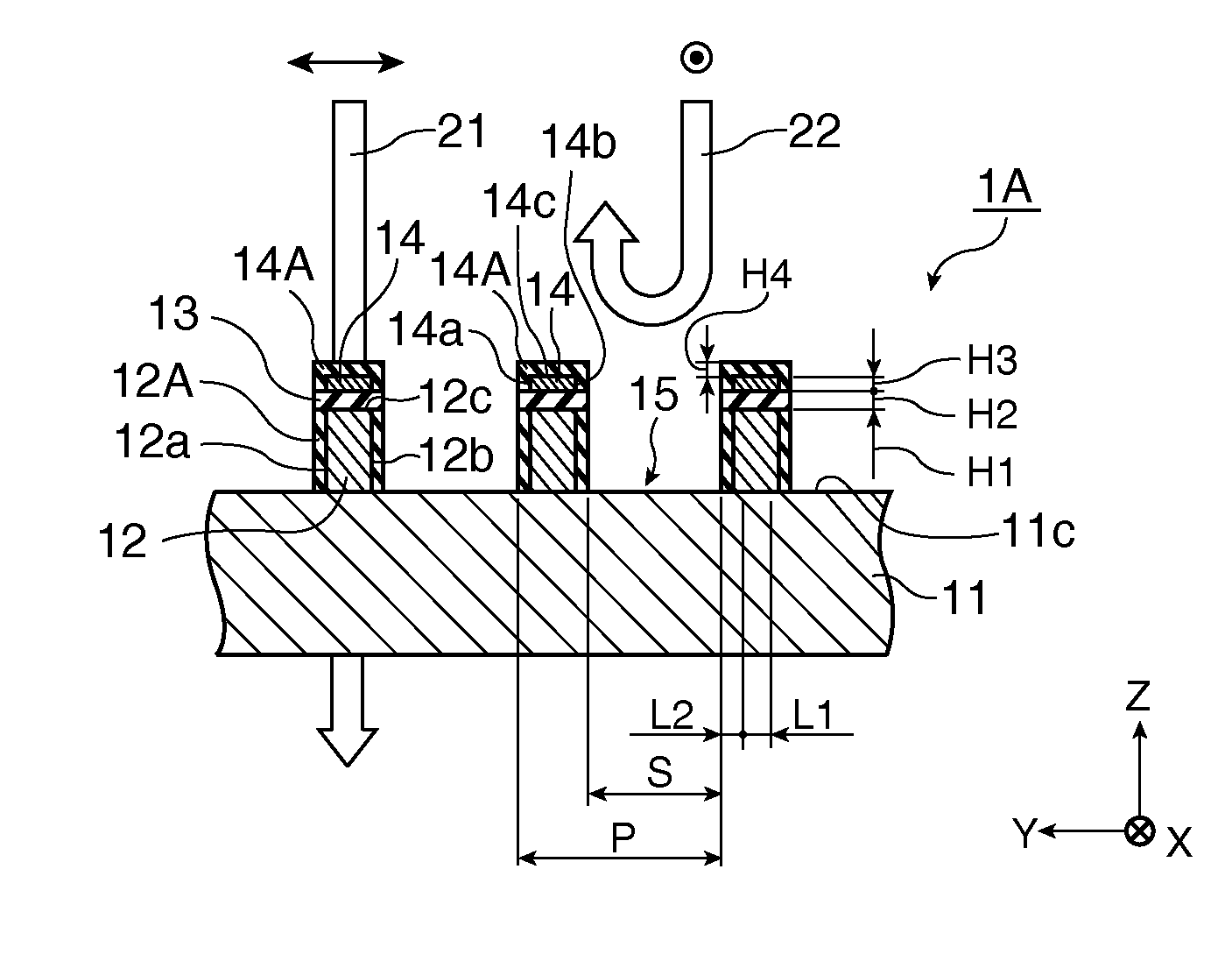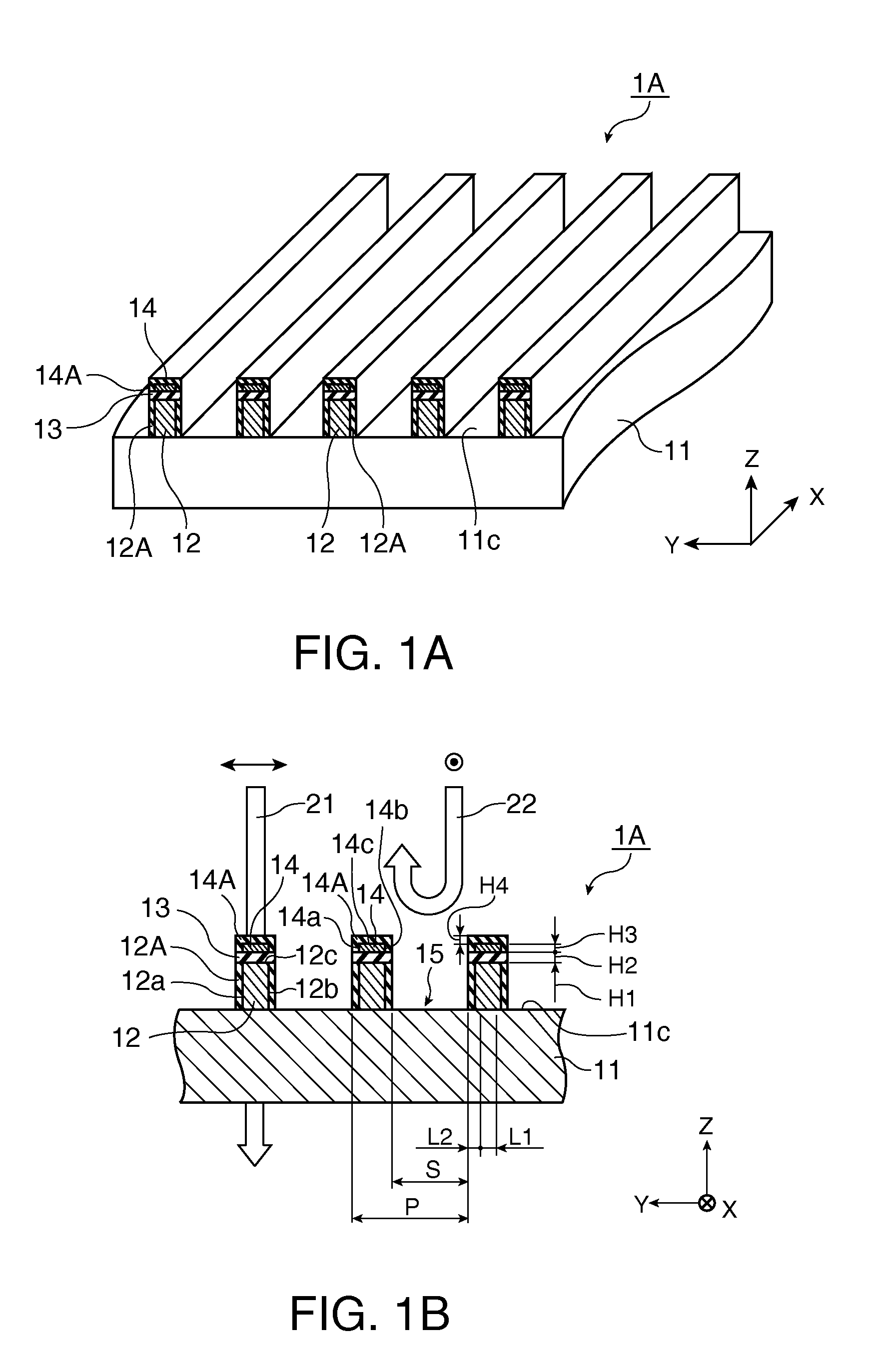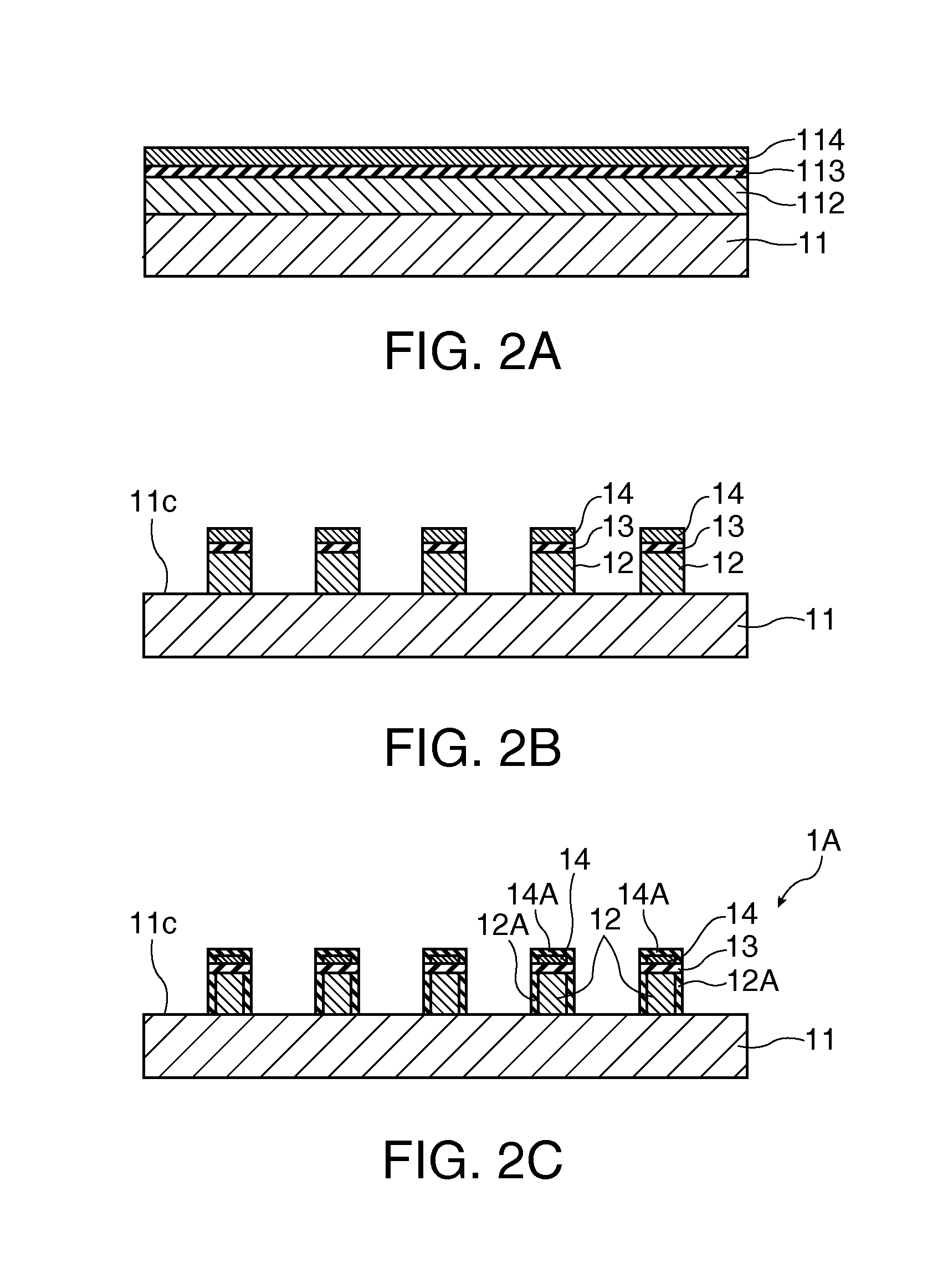Polarization element, projector, liquid crystal device, electronic apparatus, and method of manufacturing polarization element
a technology of polarizing elements and electronic devices, which is applied in the direction of polarizing elements, non-linear optics, instruments, etc., can solve the problems of inability to ensure sufficient reliability, affecting the quality of optical characteristics, etc., to achieve the effect of superior high-temperature reliability
- Summary
- Abstract
- Description
- Claims
- Application Information
AI Technical Summary
Benefits of technology
Problems solved by technology
Method used
Image
Examples
modified examples
[0083]Then, some modified examples of the polarization element according to the present embodiment will be explained with reference to FIGS. 3A through 3C.
[0084]FIGS. 3A through 3C are partial cross-sectional views of the polarization elements according to first through third modified examples.
first modified example
[0085]The polarization element 1B of the first modified example shown in FIG. 3A has an area 16 with a refractive index lower than that of the substrate 11 disposed in an area between the metal layers 12 adjacent to each other. The configuration other than the areas 16 is common to the polarization element 1B and the polarization element 1A shown in FIGS. 1A and 1B.
[0086]In the present modified example, the areas 16 are formed by partially removing the surface of the substrate 11 exposed between the metal layers 12 disposed on the substrate 11 adjacent to each other by the dry etching or the like. Alternatively, it is also possible to use the substrate 11 with grooves having been formed previously as stripes. The depth H5 with which the surface of the substrate 11 is entrenched is in a range of no smaller than 30 nm and no larger than 200 nm, for example.
[0087]According to the polarization element 1B provided with the configuration described above, since the effective refractive ind...
second modified example
[0088]Then, the polarization element 1C of the second modified example shown in FIG. 3B is provided with a configuration in which the laminate bodies each including the metal layer 12 having the first dielectric layers 12A formed on the side surfaces, the intermediate dielectric layer 13 (the third dielectric layer), and the absorber layer 14 having the second dielectric layers 14A formed on the side surfaces are formed on the substrate 11, and fourth dielectric layers 17 are further formed on the respective laminate bodies.
[0089]It should be noted that although the areas 16 with the low refractive index are formed between the metal layers 12 adjacent to each other in FIG. 3B, the configuration having the groove sections 15 shown in FIGS. 1A and 1B can also be adopted.
[0090]The fourth dielectric layers 17 can be formed using an arbitrary dielectric material. Specifically, an oxide, a nitride, and an oxynitride of, for example, silicon, aluminum, chromium, titanium, nickel, tungsten,...
PUM
| Property | Measurement | Unit |
|---|---|---|
| width L1 | aaaaa | aaaaa |
| width L1 | aaaaa | aaaaa |
| width L1 | aaaaa | aaaaa |
Abstract
Description
Claims
Application Information
 Login to View More
Login to View More - R&D
- Intellectual Property
- Life Sciences
- Materials
- Tech Scout
- Unparalleled Data Quality
- Higher Quality Content
- 60% Fewer Hallucinations
Browse by: Latest US Patents, China's latest patents, Technical Efficacy Thesaurus, Application Domain, Technology Topic, Popular Technical Reports.
© 2025 PatSnap. All rights reserved.Legal|Privacy policy|Modern Slavery Act Transparency Statement|Sitemap|About US| Contact US: help@patsnap.com



